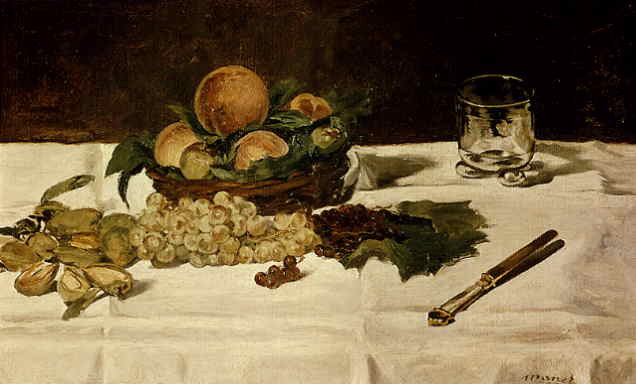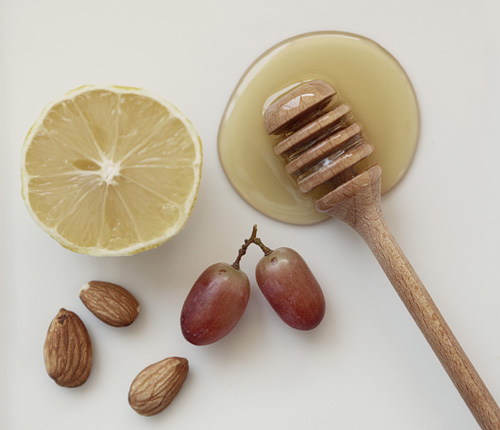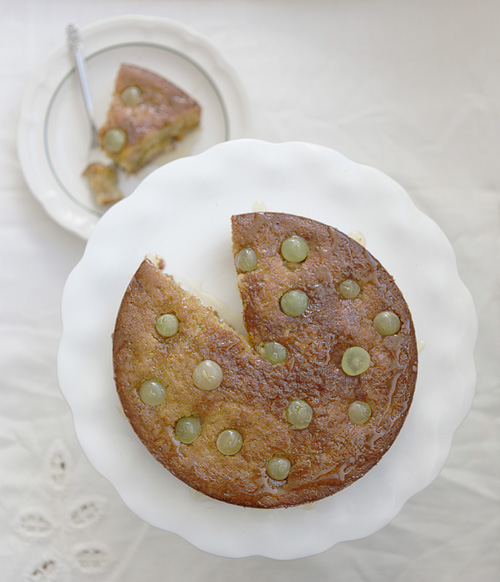I was given the opportunity along with a handful of other food bloggers to submit a guest post to the wonderful site The Kitchn. This is the second time I have worked with a still life by Manet and you can find most of the general information about his life and art in my previous post. I would like to give a big thanks to The Kitchn and I hope you enjoy.

Oil on canvas, 45 x 73.5 cm, Musée d’Orsay, Paris, France
Peaches are a very common subject in Édouard Manet’s still lifes appearing in at least three different paintings. Historically, the use of fruit in still life painting typically denoted both the Redeemer and the Antichrist in Christian iconology. The peach, similar to the fruit of the Original Sin, is a signifier for the Old Testament whereas the grape from which wine is derived, represents the blood of Christ and the New Testament. Religion played an important role in many of Manet’s major works including The Mocking of Christ (1865) and The Dead Christ with Angels (1864) but Manet contradicted accepted practices by depicting Christ as distinctly human. Convoluting typical standards of representation is one of the legacies of Manet’s art and so his painting Fruits on a Table (1864) is simultaneously rife with symbolism, inherent within the genre, as well as a simple depiction of fruits and dishes on a table, very accessible and completely literal.

“Let them eat cake,” was famously quoted (allegedly) by Marie Antoinette, Queen of France. This beloved foodstuff has such a long history that I have to listen to Marie and eat some cake. The word cake is derived from the Old Norse word kaka and locales with a strong European influence are where this sweet dessert are most often found. As long ago as Ancient Egypt, bakers were welding their prowess in the kitchen sweetening their cakes with honey. Found at important events from birthdays to weddings with holiday specific varieties, cakes have become synonymous with milestones and happy memories. When it comes to the sweet stuff I think we all want “to have one’s cake and eat it too.”

Almond Cake with Grapes and Peaches
Yield: 6 serving
1 tablespoon unsalted butter
2 large eggs
2/3 cup sugar
1/3 cup whole milk
4 tablespoons melted, unsalted butter
1/4 cup extra-virgin olive oil
1/2 teaspoon vanilla extract
1 peach, mashed*
3/4 cup all-purpose flour
3/4 cup ground almonds
3/4 teaspoon baking power a pinch of salt
zest of one lemon
20 grapes
honey to drizzle
Preheat the oven to 350°F/180°C. Prepare a 9-inch cake pan by rubbing the bottom and sides with 1 tablespoon butter.
Beat the eggs and sugar in a large bowl until theyʼre thick, about 2 minutes on high with a hand mixture. To the egg mixture, add milk, 4 tablespoons melted butter, oil, vanilla and mashed peach, mix well.
Sift together the flour, almonds, baking powder and salt in a separate small bowl. Add the zest, tossing it to make sure it is well-distributed. Then stir the flour mixture into the wet ingredients, mixing until well combined.
Transfer the batter to your cake pan and place 12 of the grapes evenly spaced in the cake batter.
Bake on the middle rack for 20 minutes then pull out your cake and top it with the remaining 8 grapes halved. Bake until the top is gold and a toothpick inserted into the centre of the cake comes out clean, an additional 15 to 20 minutes. Remove from the oven and allow to cool in the pan for 20 minutes before drizzling with honey. Will keep for 3 to 4 days in an airtight container.
*You could use canned peaches but be careful, they make the cake much sweeter.


11 comments
Karen says:
May 17, 2009
Congrats on the excellent guest post and even better grape cake! It was so tasty. Now that I am in steamy Singapore I wish I had such a light, moist cake to nibble on.
Siri says:
May 17, 2009
Love the idea of this- olive oil as the fat, honey as the sweetener, it seems very old timey (in a mediterranean sort of way). Plus- how cute does it turn out with all those grapes decorated over the top! br /br /Were you able to come across a ripe peach+br /br /-Siri
Julie says:
May 17, 2009
That pool of honey looks delectable and the photo is delicious! br /br /You manage to create entries that are consistently fascinating and fun. Keep cooking and keep writing.
thecookieshop says:
May 17, 2009
Beautiful and delicious!
Belle@Ooh, Look says:
May 18, 2009
Oh, this looks beautiful (the still life, cake and recipe). I will definitely be making it (the cake), though I’d better hurry up or grape season will be over!
Lorraine @ Not Quite Nigella says:
May 18, 2009
This is so interesting! I was just saying to my husband how I hadn’t seen grapes in a cake and then here you are! :D
petoskeygirl says:
May 18, 2009
That cake looks so good. I am going to try the Tomato soup cake on my walking group. br /br /I so enjoy your posting’s
Y says:
May 19, 2009
Congrats on your guest post! I love the look of that cake, and I don’t bake enough with grapes, I’ve just realised!
Christie @ Fig amp; Cherry says:
May 25, 2009
I absolutely love your blog Megan. The presentation of the cake with the grapes dropped in and suspended on the top is so striking. Just lovely!
jenny says:
Nov 14, 2010
I tried this recipe and it didn’t work. There wasn’t enough flour in the mix, it was very wet and runny so didn’t cook.
Emotional Still Life Paintings - Subject Matter, Lighting, Arrangement Tips | Fine Art and Painting Tips says:
Oct 6, 2011
[…] the subject matter is almost the same, the results are startlingly different. Edouard Manet’s Grapes, Peaches and Almonds is the type of painting we normally associate with this genre. This realistic, romantic piece uses […]